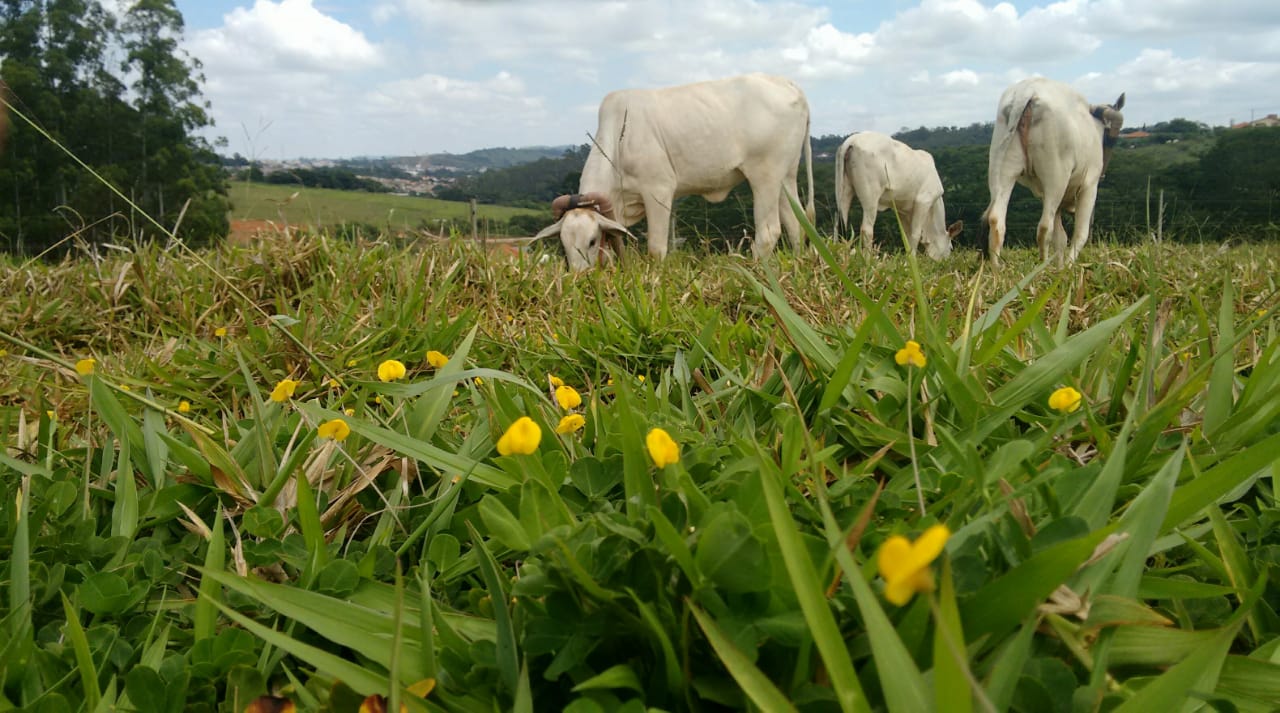Featured Journal Paper
From Grass and Forage Science
Winter 2020
Recently, there has been an increase in number of farmers in Brazil improving their pasture through the use of lime, ploughing, reseeding, and the application of P & K fertiliser. Crops, such as soya bean or maize, are then grown for a couple of years before being under-sown and returned to pasture. This process results in the loss of soil organic matter and soil carbon stocks. The use of legumes could help to reverse this trend, but in Brazil the use of forage legumes has typically been low. Initial varieties were susceptible to fungal disease but when resistant varieties were produced they did not persist in the sward. The crown-forming legume Stylosanthes is dependent on natural reseeding. It can suffer due to defoliation and damage by treading as the growth point is exposed in upper canopy and this can make it difficult for the plants to get to their reproductive stage. This led to proportion of legume in the crop gradually declining over a number of years, and even disappearing. This legume could naturally reseed if there was a reduction in grazing before the period of flower formation and seed production.
Clonal legumes form stolons or rhizomes. The growth point is near to the ground so they are less likely to be affected by the grazing animal. However, careful management of light and sward height are needed to allow the legume to persist. For the forage peanut (Arachis pintoi) grown with Marandua grass a pre-grazing canopy height of 24 – 30 cm and 15 cm at the end of grazing cycle is advised when rotationally grazing and a canopy height of 20 – 25 cm when using continuous grazing. Using this type of sward showed a 28.7% increase in livestock daily live weight gain per hectare compared with N-fertilised grass-only pasture. However, the seed harvesting process for the forage peanut is very laborious.
Tree legume species can be useful in silvopastoral systems. Compared to maize cropping over the same time period (25 years), tree legumes can increase C in topsoil by 5-15 Mg C/ha although there may be a decrease in grass herbage accumulation and livestock performance.
The agriculture sector in Brazil contributes around one third of all GHG emissions in the country with majority of methane and nitrous oxide coming from beef and dairy cattle. Evidence suggests that legumes can reduce the production of enteric methane through their effect on methanogenic archaea in the rumen. Studies have shown that grazing animals on mixed pastures show reduced methane emissions compared to monocultures. Similar nitrous oxide emissions have been measured from mixed pasture and grass-only pastures and emissions from bovine excreta are less on mixed swards than for grass-only with fertiliser N.
In conclusion, farmers could see benefits of using clonal legumes, such as the forage peanut, in a mixed sward with Marandu grass with target grazing heights dependent on whether the pastures are grazed rotationally or continuously. Crown-forming legumes such as Stylosanthes could be grown for a couple years, so they would be suitable for integration with cropping. Legumes may also mitigate against GHG emissions whilst maintaining milk and meat production.

Zebu cattle grazing forage peanut (Arachis pintoi). Taken at the University of Lavras in the State of Minas Gerais by Italo B.G. Lima.

